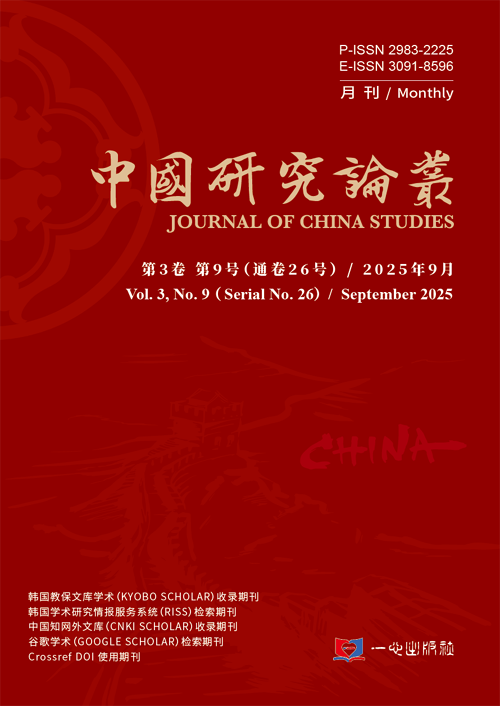- 영문명
- The Historical Logic, Practical Logic, and Value Logic of Chinese Path to Modernization
- 발행기관
- YIXIN 출판사
- 저자명
- Yan Zhang
- 간행물 정보
- 『Journal of China Studies』Vol.3 No.9, 1~12쪽, 전체 12쪽
- 주제분류
- 사회과학 > 교육학
- 파일형태
- 발행일자
- 2025.09.30

국문 초록
The Chinese path to modernization represents a major achievement in China’s quest for modernization. Its core objective is to build a prosperous and stable modern socialist country, thereby achieving the great rejuvenation of the Chinese nation. This path embodies distinct Chinese characteristics. This paper examines the Chinese path to modernization from three logical perspectives: historical, practical, and value. In terms of historical logic, although the seed of Chinese capitalism had emerged during the Ming and Qing dynasties, its full development began amid the arduous journey of national salvation in modern times, marking a critical transition from a passive response to active creation. In terms of practical logic, although many patriots and reformers attempted various modernization plans in modern China, all ended in failure. Since its establishment, the Communist Party of China has consistently integrated Marxism with China’s actual conditions, successfully pioneering a unique path to modernization with Chinese characteristics. In terms of value logic, the Chinese path to modernization is inherent in the essential requirements of socialism. It not only demonstrates distinctive Chinese features but also upholds socialist principles, forming a unique model different from Western modernization and providing Chinese wisdom and solutions to other late-developing socialist countries. Together, these three dimensions of logic demonstrate that the people-centered nature of Chinese modernization is not only a historical inevitability in the modern transformation of Chinese civilization, but also a practical achievement of Marxist theoretical innovation, as well as China’s solution to common challenges in human development.
영문 초록
中国式现代化是中国探索现代化道路的重要成果,其核心宗旨在于构建一个繁荣稳定的社会主义现代化强国,从而实现中华民族伟大复兴。中国式现代化呈现了中国的特点,本文从历史、实践、价值三重逻辑出发,对中国式现代化进行研究。在历史逻辑方面,中国自明清时期便已出现现代化的萌芽,但其正轨发轫于近代救亡图存的艰辛历程,实现了从被动回应到主动开创的重大转变。在实践逻辑方面,近代诸多仁人志士曾尝试多种现代化方案,却均告失败。自中国共产党成立以来,始终坚持将马克思主义与中国的具体实际相结合,成功开创出一条具有中国特色的现代化道路。在价值逻辑方面,中国式现代化内生于社会主义的本质要求,既彰显中国特色,又始终保持社会主义属性,形成区别于西方现代化模式的独特标识,为其他社会主义后发国家贡献了中国智慧与中国方案。三重逻辑共同表明,中国式现代化的人民性既是中华文明现代性转化的历史必然,又是马克思主义理论创新的实践成果,更是中国为应对人类共同发展问题所提出的解决方案。
목차
Ⅰ. 引言
Ⅱ. 历史逻辑:从被动现代化到主动现代化的过程
Ⅲ. 实践逻辑:从器物现代化到思想现代化的过程
Ⅳ. 价值逻辑:从实现民族独立到以人民为中心的现代化过程
参考文献
키워드
해당간행물 수록 논문
참고문헌
최근 이용한 논문
교보eBook 첫 방문을 환영 합니다!

신규가입 혜택 지급이 완료 되었습니다.
바로 사용 가능한 교보e캐시 1,000원 (유효기간 7일)
지금 바로 교보eBook의 다양한 콘텐츠를 이용해 보세요!


